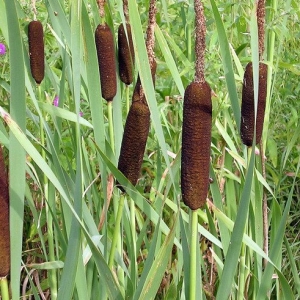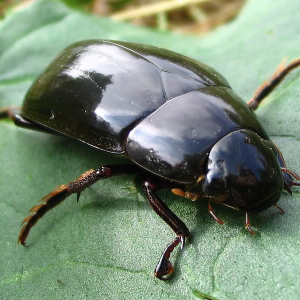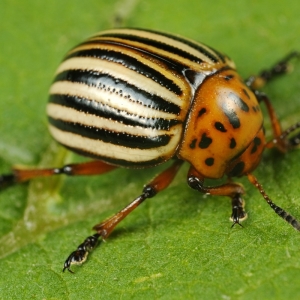The wire is a long larva in the form of a worm with a very rigid shell. The pest lives in the ground and affects tuber cultures. Most of all he loves potatoes and carrots, but not a brood and beet, repoka, radister.
Wire - where he is coming from
The cycle of development of this harmful being is for five years. The first three years are different sizes of the larvae (each year they increase in size), the fourth year - a doll that will get out of an adult larvae and in two or three weeks turns into a beetle, and finally, the fifth year - new larvae, which puts the adult beetle . It was the first three years when the larva grows, it is called a wireboat. At the same time, with each new season, the larva becomes more powerful and, as a result, the vegetables are stronger. To get rid of the wireman, it is necessary to reborn the five-year development cycle. This means that it is necessary to deal with it annually for five years.
How to deal with a wireless agrotechnical methods
Againness implies the drainage of the site, the deoxidation of the soil, thorough perplex and planting certain plants.
- The pest larva loves raw soil and thickened landing. In the same places he feels great. So if there is this harmful weed on the site, it needs to be completely removed. After the removal of dusty, the soil will become more dry and the wire will not be able to multiply in it.
- If the land on the site is pretty sour, then the wire will be settled there for sure. Lower the level of soil acidity can be introduced into it ground limestone (carbonic lime). This remedy is made in autumn before the peopling of the garden and it takes 20-30 kg per 100 sq.m. You can also put chalk or chopped egg shell into the soil.
- The autumn people of the garden must be carried out at a depth of 20-30 cm and the land is slightly broken. Visible larvae and beetles should be chosen manually and destroy immediately. Wire, which will remain in the communes of the earth, with severe frosts in winter, must freeze. In the spring, the land must be overweight and choose the remaining individuals.
- You can scare the wire, sitting around the perimeter of the bob area (beans, peas, soybeans, beans).
How to deal with the wireman folk methods
The wire is a very lively creature, therefore, except for agrotechnics it is worth applying and folk methods:
- In the spring planting of vegetable crops, it is necessary to shed a garden with a pale pink solution of manganese.
- Cut into rather large pieces potatoes, carrots and beets. Place them on long bamboo sticks and bury in the garden. The ends of the sticks need to be left upstairs so that they can be pulled out of the earth. Every two or three days it is necessary to neatly remove sticks with bait and destroy the wires that have already settled on vegetables. Making such a procedure is needed a few days before landing seeds and tubers, and then - throughout the season.
- Instead of wands, you can use jars with the same bait. For this, small glass vessels from under children's nutrition must be half filled with vegetables and bury in the ground in the upper layer. Adult beetles that need to choose and destroy are in open banks.
- In the fall on the garden, you can decompose a straw mixed with manure. Such cozy warm heaps can attract the wires that will want to winter warm. As soon as the first frosts come, the heaps of these need to pour gasoline and burn.
How to deal with the wiretop chemical methods
Today in any garden shop you can buy poisons from all sorts of pests. Very good results give "Barguzin", "Bazedin", "Protoks" and other similar. In order not to harm the environment and do not poison yourself, the poisons need to be used very carefully and clearly follow the instructions. Using a set of measures, from the wireman you can get rid of forever and get a good yield of vegetable crops.

In addition to the wireman, other pests can be attacked on vegetables. How to deal with them with them, look in this video.

































